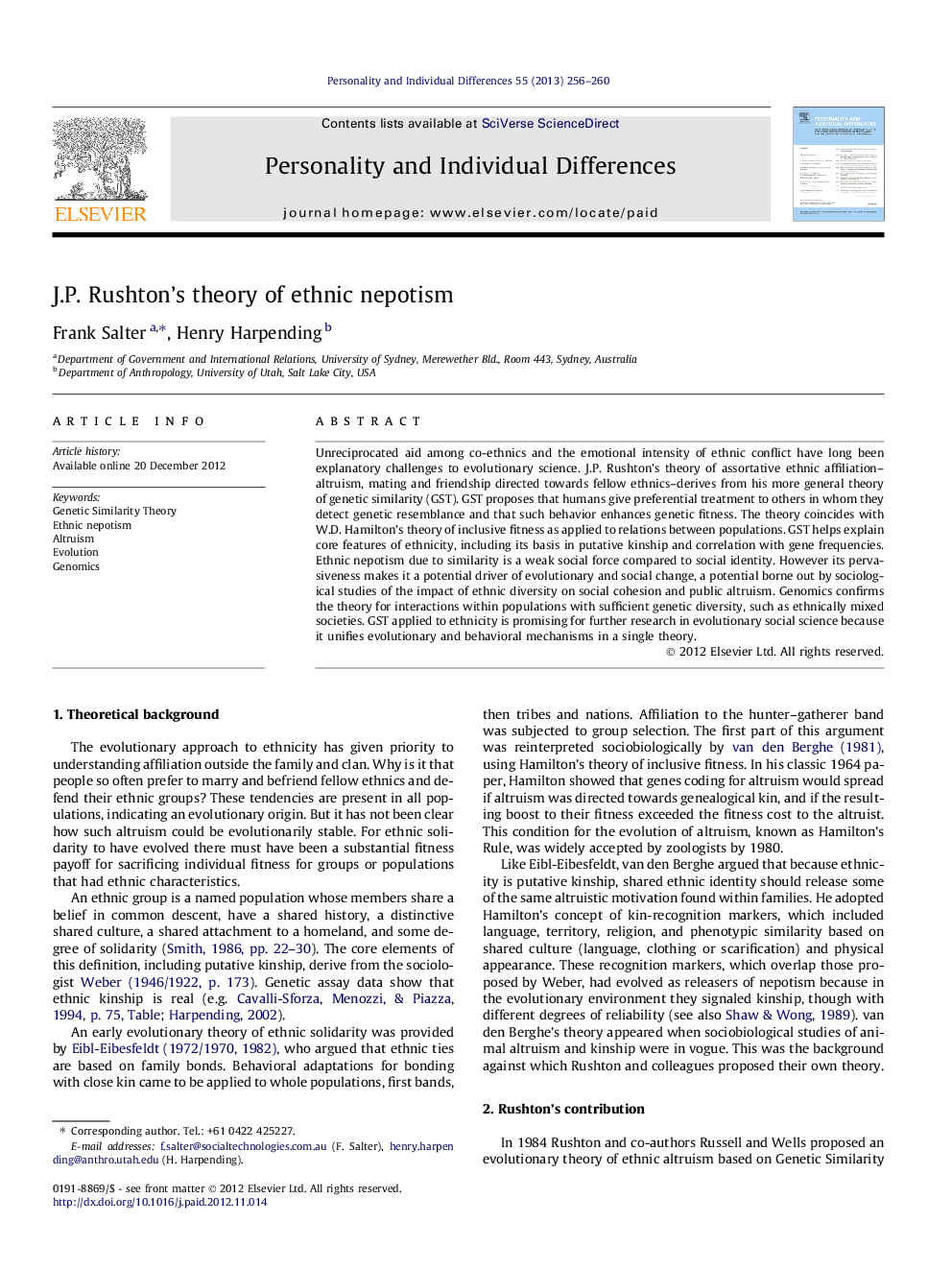| کد مقاله | کد نشریه | سال انتشار | مقاله انگلیسی | نسخه تمام متن |
|---|---|---|---|---|
| 890807 | 914009 | 2013 | 5 صفحه PDF | دانلود رایگان |

Unreciprocated aid among co-ethnics and the emotional intensity of ethnic conflict have long been explanatory challenges to evolutionary science. J.P. Rushton’s theory of assortative ethnic affiliation–altruism, mating and friendship directed towards fellow ethnics–derives from his more general theory of genetic similarity (GST). GST proposes that humans give preferential treatment to others in whom they detect genetic resemblance and that such behavior enhances genetic fitness. The theory coincides with W.D. Hamilton’s theory of inclusive fitness as applied to relations between populations. GST helps explain core features of ethnicity, including its basis in putative kinship and correlation with gene frequencies. Ethnic nepotism due to similarity is a weak social force compared to social identity. However its pervasiveness makes it a potential driver of evolutionary and social change, a potential borne out by sociological studies of the impact of ethnic diversity on social cohesion and public altruism. Genomics confirms the theory for interactions within populations with sufficient genetic diversity, such as ethnically mixed societies. GST applied to ethnicity is promising for further research in evolutionary social science because it unifies evolutionary and behavioral mechanisms in a single theory.
► GST helps explain core features of ethnicity.
► Sociological research confirms GST applied to ethnicity.
► Genomics confirms the theory for ethnically mixed societies.
► Rushton’s important discoveries concerning genetic ethnic similarity are yet to be fully mined.
Journal: Personality and Individual Differences - Volume 55, Issue 3, July 2013, Pages 256–260